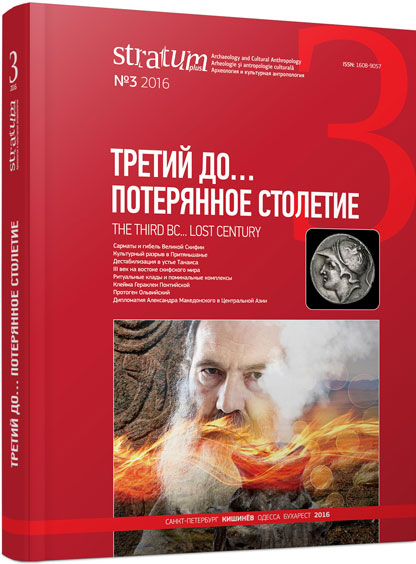Кочевнические жертвенно-поминальные комплексы («странные комплексы») III—I вв. до н. э.: социальная интерпретация явления
Nomadic Sacrificially-Memorial Complexes (“Odd Complexes”) 3rd—1st centuries BC: Social Interpretation of the Phenomenon
Author(s): Evgeny V. VdovchenkovSubject(s): History, Archaeology, Cultural history, Social history, Ancient World
Published by: Издательский дом Stratum, Университет «Высшая антропологическая школа»
Summary/Abstract: This article focuses on the social and ethno-cultural interpretation of nomadic sacrificially-memorial complexes/“odd complexes” (items of horse harness, weapon, military equipment and metal vessels, found in the barrow mounds, natural hills and not associated with 3rd—1st centuries BC burials in the steppes of Eastern Europe). These sites may have belonged to the late Scythians and/or Sarmatians. I adhere to Sarmatian version, considering temporal and spatial distribution of “odd complexes”. The earliest discovery of tamga from the Glinoe cemetery tells us about eastern cultural influence in the European steppes. Tamga on the silver bowl from the “odd complex” Bulahovka demonstrates the eastern influence too.My hypothesis is that the “odd complexes” belonged to youth (male) associations. This hypothesis can explain the key features of this phenomenon — the connection with the war and the presence on uninhabited areas. These associations of young people, while out of the tribe, receive the necessary skills and training, do raids and hunting. “Odd complexes” are traces of ritual acts, memorial and votive sites left by the youth (male) associations.
Journal: Stratum plus. Археология и культурная антропология
- Issue Year: 2016
- Issue No: 3
- Page Range: 197-215
- Page Count: 19
- Language: Russian
- Content File-PDF

